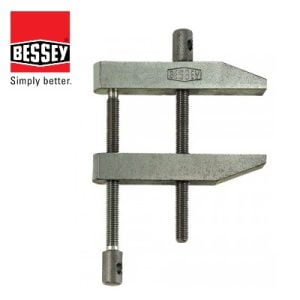Designing an innovative mattress whose product-development-plan is focused on the customer’s perceived comfort
The fast-paced nature of modern people’s lives means stress levels are rising and sleep quality is deteriorating. Sleep, on the other hand, is closely linked to health and should not be overlooked. Human-centred design asks for the wellbeing and comfort of the customer or worker when interacting with a product.
As part of its commitment to improving consumers’ sleeping experiences, the mattress industry is continually seeking deep insights and critical data in order to gain a complete understanding of all aspects of consumer needs. The Indian mattress industry has grown substantially in terms of technology and innovation over time.
THE CONCEPT OF ERGONOMIC DESIGN
Mattresses have always served as a middle ground. Soft comfort for a restful night’s sleep or solid support for improved posture, but not both. That age-old rule is now being defied by innovators. Adding more familiar gel toppers to the mattress to create novel cradling sensations, as well as designing a hyper-elastic polymer grid that stretches to support pressure points while cradling sleepers in the mattress material, provides general support while also conforming to body shape. A mattress that constantly senses users’ movements and can automatically change in real-time, changing pressure or head position, to counteract tossing and turning, snoring, and a number of other difficulties. The future is bright, and the consumer wearable technology industry continues to innovate
Comfort-driven design is based on the use of virtual prototyping, virtual optimization, and physical prototyping and testing. The innovation factors in mattress innovation based on layered comfort, memory foam, designer comfort, adjustable, and eco-friendly.
CUTTING EDGE TECHNOLOGY AND INNOVATIONS WITH A COMFORT–DRIVEN DESIGN
Technology has infiltrated the mattress industry, as it has nearly every other aspect of your life. Today, memory foam, latex, pocketed innerspring, gel, and foam mixtures of various sorts are all available. There are a variety of choices available, including air chamber beds, smart beds, and more.
The Orthopedic memory foam mattress features large grooves for increased airflow, which helps individuals sleep better by lowering their body temperature.
The SmartGRID mattress touts itself as a scientifically validated solution to restless evenings. SmartGRID is a cutting-edge technology that regulates the softness and firmness of the mattress based on the sleeping position or body shape.
A step-change in mattress foundation technology is designed to further enhance the standard of sleep.
· Biometric monitoring and sleep tracking
· Air chambers that can be adjusted and monitor the environment.
· Firmness modifications
· Apps and other smart gadgets’ connectivity
· Climate control measures
· Audio features, such as alarm clocks and inbuilt speakers,
PRODUCT INNOVATION
Product innovation, whether radical or incremental, always benefits brands by increasing recall value in the minds of consumers and helping to amplify competitive advantage. To be considered truly innovative, an invention based on advanced technologies and product offerings must provide consumers with new value. In an ultra-competitive market defined by changing consumer needs, it is critical for brands to innovate products and introduce new offerings on a regular basis.

Compressing, roll-backing, inner spring
beds, latex alternative foam, individually pocketed spring technology, and
other improvements have all been introduced thanks to the engagement of
start-ups. Mattress sales have also risen as a result of innovation in the
sector. As a result of the COVID-19 outbreak, consumers’ expectations for a
pleasant and hygienic mattress with easy maintenance have risen even higher.
Ongoing cadence of new advancements and
innovation represents an impressive step forward for the sleep tech industry
and the world. While fundamental accuracy, such as identifying actual sleep
time, remains a huge difficulty across all modalities, it’s wonderful to see
the alternatives accessible to consumers continuing to expand, ultimately
enabling more ways to reach and help people with bad sleeping patterns or sleep
disorders.
FUTURE
OF SLEEP TECHNOLOGY
There are also new developments in
video-based sleep sensing. This technique uses variations in facial skin colour
to identify heart rate, as well as infrared and other data to detect changes in
body temperature, which can be used to detect sleep. Similar technology might
be used in automobile dashboards to help commercial and consumer drivers who
are on the road for lengthy periods of time stay alert.
Next-generation mattress accessories that
allow some degree of sleep climate management via temperature, air circulation,
firmness, and other factors to improve a person’s sleep. Smart mattress pads,
digitally equipped luxury beds, and bedroom environment control systems such as
smart sleep lighting can all be linked to wearables and in-bed sensors to give
users a fully automated sleeping experience.
Meanwhile, other new sleep tracking
technologies, such as your virtual assistant and, more recently, your
thermostat, measure the changes in frequency of any kind of sound or light wave
produced by a moving source with respect to an observer and combine existing
wireless transmitters and sensors to capture information about a person’s sleep.
Omnichannel Marketing for
Direct-to-Consumer (D2C) Brands
The
key reason for the mattress industry to reach out directly to the consumers is
to cater to personalise items that companies cannot offer inside stores.
In India, the mattress industry has witnessed a
similar transition in recent years, with D2C companies created by disruptors
enjoying substantial growth. To catalyse growth in the D2C mattress category,
it is critical to evaluate customer perceptions of current brands and discover
the major impulses influencing purchasing decisions. Manufacturers have been
forced to handle everything from inventory to sales as part of the D2C model in
order to prepare for a digital and omnichannel experience. A brand’s identity
and marketing activities are most likely to have a significant impact on this
generation.
Written & edited by Mousami Keerthi
Editor, Woodzon.com





